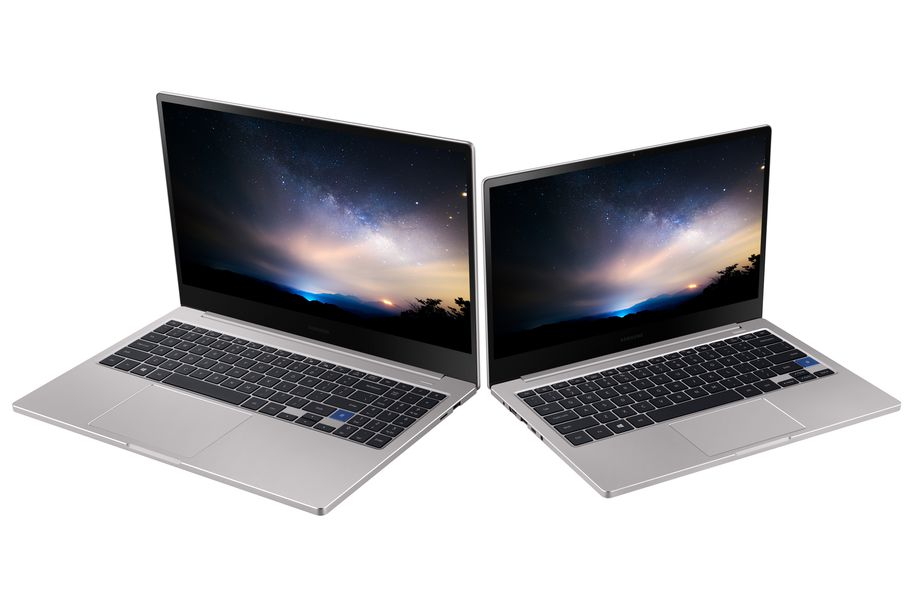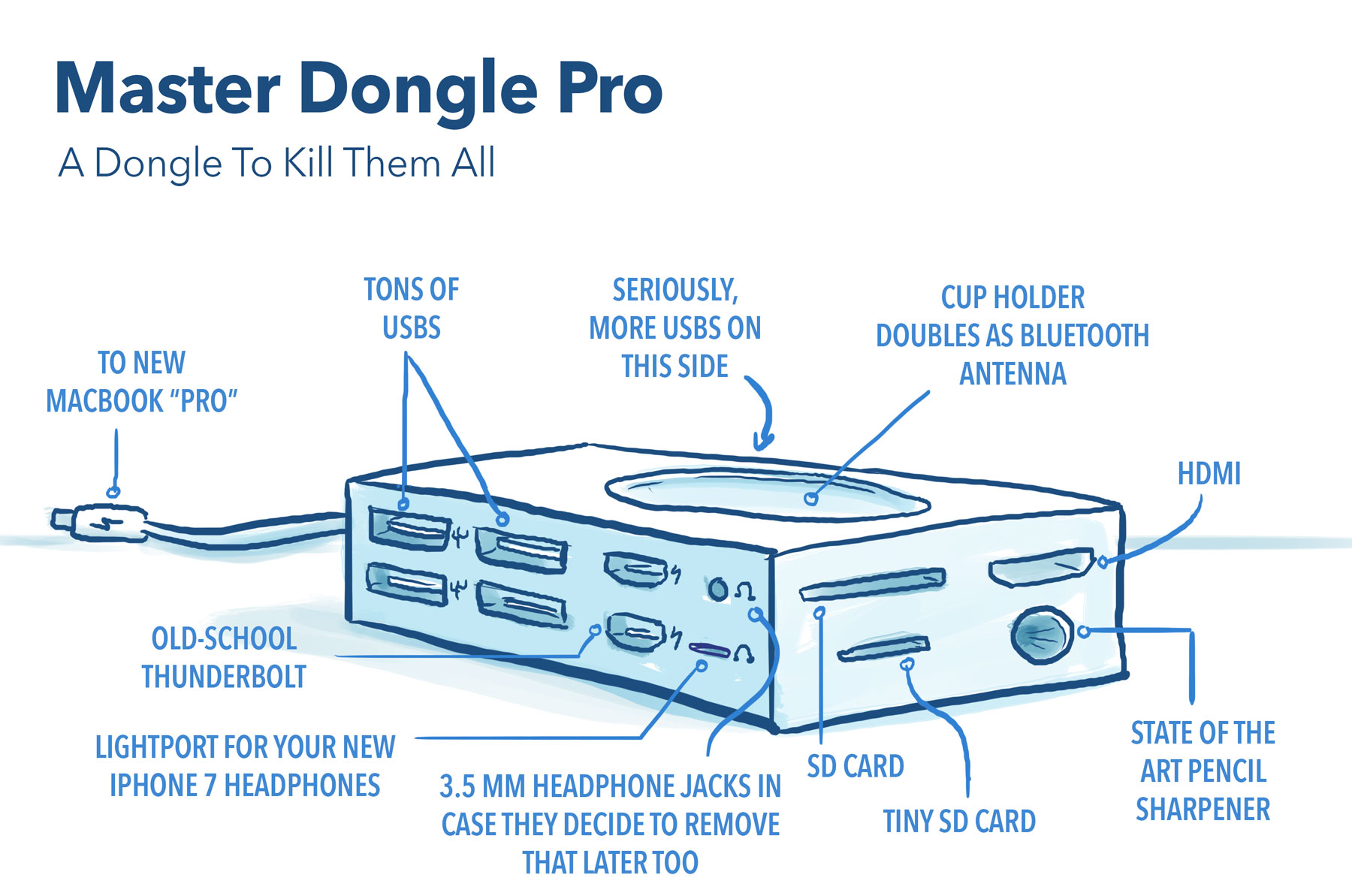Look up “shameless” in the dictionary and you’ll find the Samsung logo.

Samsung reveals their new MacBook Pros.

Samsung reveals their new MacBook Pros.
John Gruber on the MacBook keyboards:
I consider these keyboards the worst products in Apple history. MacBooks should have the best keyboards in the industry; instead they’re the worst. They’re doing lasting harm to the reputation of the MacBook brand.
I just started a new job and normally I get excited because that means I get a brand-new MacBook Pro.
This is the first time in my 19 years as a graphic designer I’m not looking forward to getting a new machine.
And that sucks.
Jim Dalrymple has the scoop on the firmware fix for the overheating MacBook Pros (via Daring Fireball):
“Following extensive performance testing under numerous workloads, we’ve identified that there is a missing digital key in the firmware that impacts the thermal management system and could drive clock speeds down under heavy thermal loads on the new MacBook Pro,” An Apple representative told me. “A bug fix is included in today’s macOS High Sierra 10.13.6 Supplemental Update and is recommended. We apologize to any customer who has experienced less than optimal performance on their new systems. Customers can expect the new 15-inch MacBook Pro to be up to 70% faster, and the 13-inch MacBook Pro with Touch Bar to be up to 2X faster, as shown in the performance results on our website.”
That was quick.
When companies copy Apple’s software and hardware, what I find the most interesting isn’t what they copied, but where they deviated and implemented their own ideas. These deviations reveal the true design taste and intelligence these ripoff artists are capable of when left to use their own brains.
The latest example from Asia is Huawei’s new MacBook Pro imitation, the MateBook X Pro. The Verge’s Sam Byford has a first look video of it on YouTube. First off they’ve got a solid, derivative name.
The MateBook X Pro looks almost identical to Apple’s MacBook Pro. It’s super thin, and it has the same unibody aluminum frame first introduced by Apple in the MacBook Air in 2008. Shit, they even use the same name for the dark grey color as Apple, “Space Grey”.
The primary design deviation on the MateBook is the black bezel around the screen. It’s significantly smaller than the MacBook Pro’s bezel. Of course every design decision comes with a tradeoff. In this case, reducing the bezel around the screen to be almost nonexistent required Huawei to find a new home for the webcam, which is normally positioned inside the bezel at the top and center above the screen.
Their solution? Hide that littler bugger inside a key on the keyboard:

I think this is hilarious, but not because of where they put it. It’s hilarious because from what I can tell on The Verge’s video, it’s practically pointed at your crotch. Byford has to hunch down to get his face in view.
Do they test and troubleshoot products at Huawei? It seems to me realizing the webcam isn’t pointed at your face is not only pretty easy to catch, but also to fix. Just angle it up a few millimeters, right?
UPDATE: It looks like Dell doesn’t approve of eye level cams either.

The members of Designer News are tackling Apple’s problems for them.
Zdziarski explores the myth of professionals needing 16GB of RAM (via The Loop):
Apple’s latest MacBook Pro line is limited to 16GB due to energy (and likely heat) constraints, and that’s gotten a lot of people complaining that it simply isn’t enough for “real pros”. Ironically, many of the people saying that don’t quite fall into what many others would consider a “real pro” themselves; at least based on the target demographic of Apple’s “pro” line, which has traditionally been geared toward working professionals such as photographers, producers, engineers, and the like (not managers and bloggers). But even so, let’s take a look at what it takes to really pin your MacBook Pro’s memory, from a “professional’s” perspective.
First of, “myth” is a misnomer. It’s not a myth, it’s a view held by some (not all) professionals who legitimately need at least 16GB of RAM to work smoothly. Zdziarski acknowledges these people exist but I disagree in calling them “edge cases” like he does.
Zdziarski correctly points out developers need to write software that doesn’t try to eat every gig of memory your system has:
A couple apps you won’t see on this list are Chrome and Slack. Both of these applications have widespread reports of being memory pigs, and in my opinion you should boycott them until the developers learn how to write them to play nicer with memory. You can’t fault Apple for poorly written applications, and if Apple did give you 32 GB of RAM just for them, it wouldn’t matter. Poorly written apps are going to continue sucking down as much memory as possible until you’re out. So it’s reasonable to say that if you’re running poorly written applications, your mileage will definitely vary. RAM is only one half the equation: programmers need to know how to use it respectfully.
This is the Catch-22: Apple could raise the Macbook Pro’s memory to 32GB but then there’s the risk that developers just make more bloated, memory-hogging software.
This reminds me of what Robert Moses did in the early 20th century in New York City, building bridge after bridge after bridge to alleviate automobile congestion. In the short-term it worked, but eventually the number of cars increased to fill all the bridges and the congestion returned.
In response to all the tech reviewers asking if the iPad Pro can replace the MacBook Pro, Fraser Spiers cleverly goes flipmode:
Firstly, consider the hardware. The huge issue with the MacBook Pro is its form factor. The fact that the keyboard and screen are limited to being held in an L-shaped configuration seriously limits its flexibility. It is basically impossible to use a MacBook pro while standing up and downright dangerous to use when walking around. Your computing is limited to times when you are able to find somewhere to sit down.
Not that you would want to use a MacBook Pro while standing anyway. The sheer weight of these devices means that your shoulder is going to take a beating if you switch from iOS to OS X. The current 15″ MacBook Pro tips the scales at 4.49 pounds – or three iPad Pros – despite having a lower-resolution screen and one less hour of battery life.
This reminds me of people who travel from one part of the U.S. to another and are upset that the exact same food options are not available to them. Every city has its strengths and weaknesses.
The same goes for our devices. Expecting an iPad Pro to have identical features to a MacBook Pro is an exercise in futility.
I’m not saying we shouldn’t compare the two devices, I’m just saying don’t be surprised when you discover their differences.